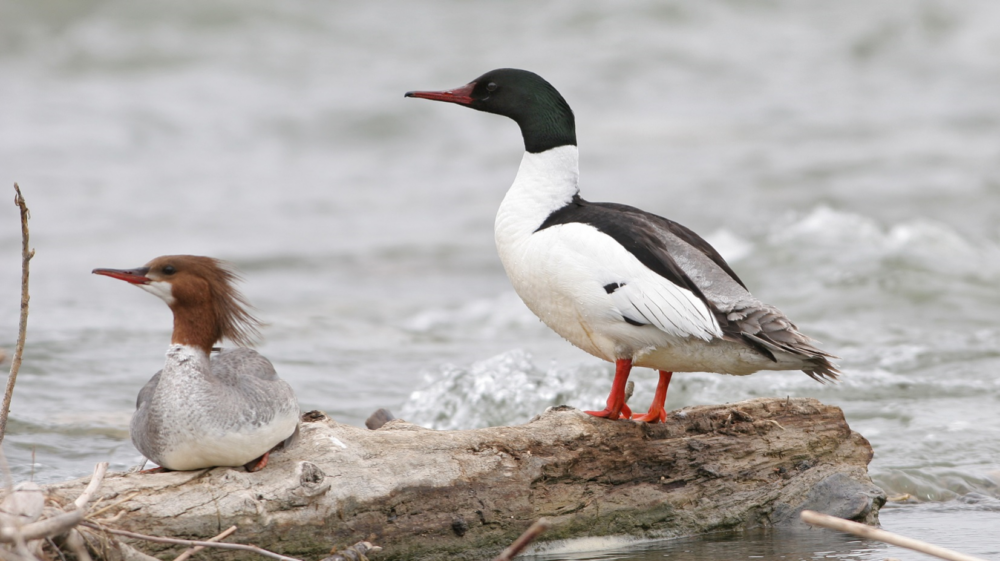Mergus merganser

Adept at catching slippery fish, the Common Merganser has a narrow, serrated bill perfectly suited to the task that has earned it some colourful nicknames like “sawbill” and “fish-duck”.
Habitat
Look for Common Mergansers in summer on large lakes and rivers in northern forests with plenty of mature trees. Winter takes them to similar places in some southern parts of Canada, the United States, and northern Mexico.
You can find Common Mergansers at Oak Hammock Marsh!
Food
Common Mergansers eat mostly fish, but they will also take aquatic insects and crustaceans, mollusks, frogs, small mammals and birds, and even some plants.
Behaviour
Nesting in tree cavities, like natural cracks and holes or those made by woodpeckers, Common Mergansers need larger, older trees because of their bigger size. On occasion they will use other types of cavities, like rock crevices, hollow logs, old burrows, and even old sheds and chimneys. They will use nest boxes if available. In these places the female shapes a bowl with her body for 6 to 17 eggs. After about 30 days, the young hatch and quickly leave the nest, jumping down to the ground. They dive to search for prey along shorelines and can often be seen sunning themselves on logs and rocks.
Conservation
Common Mergansers are of low conservation concern. Their numbers have held steady, but they are vulnerable to pollutants that may degrade their homes.

